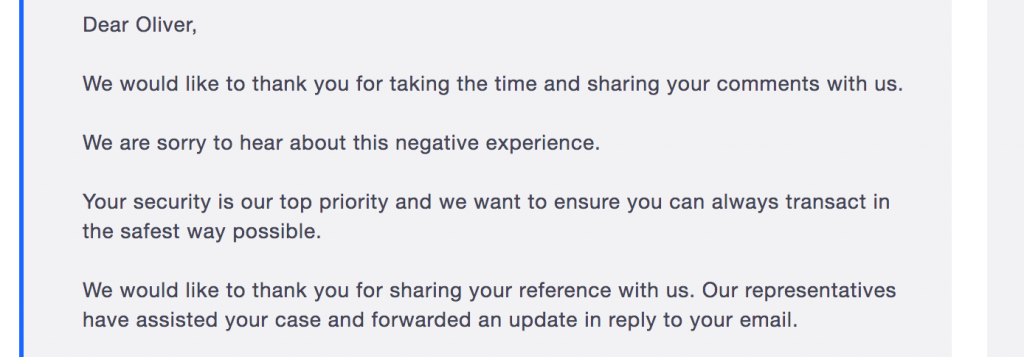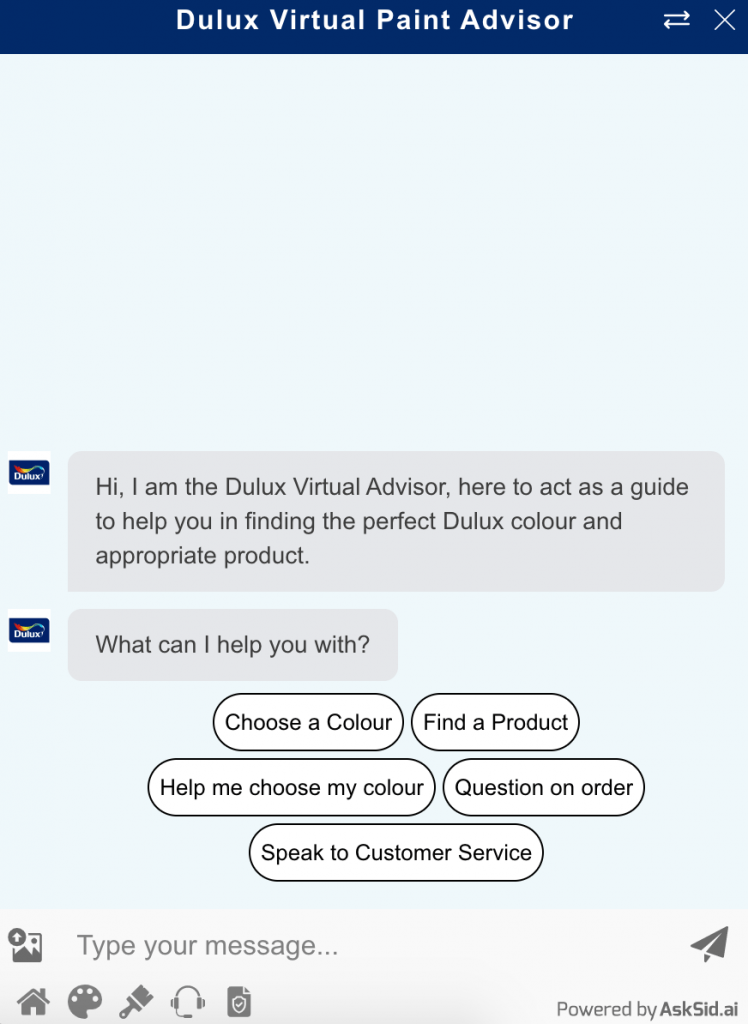In business, ‘increasing sales’ is a simple goal.
Less simple, though? How to go about actually achieving that goal.
Do you funnel more funds into your marketing budget? Hire Don Draper? Offer your sales team ridiculous bonuses – or simply yell at them to work harder?
Not quite. In fact, increasing sales doesn’t need to rely on gimmicks or discounts – and it doesn’t have to cost your business a lot of money.
Because if you gain your customers’ trust first, the sales will soon follow. But how do you build that belief? What techniques, tools, and tips can your business use to lay the foundations of trust – then build on it with sales and success?
Here are our top 6 ways your business can cultivate customer trust in 2022.
1. Showcase Your Values, People, and Story
These days, it’s no longer enough to simply sell. You have to weave a narrative around your business: to tell its story in a colorful, compelling way.
We’re talking about your business’s history, values, vision, and – of course – the people behind it. (That’s you!).
Humanizing your business will help engender that all-important connection with your customers. And as the data shows, if customers feel connected to brands, more than half (57%) will increase their spending – while 76% will choose that brand over a rival.
Here are several ways you can infuse that humanity into your business:
- Be transparent about your vision, mission, and core values: Consumers are becoming increasingly value-driven – 82% want a brand’s values to align with their own – so publicizing your business’s chief ‘why’ is a must.
- Put a timeline of your company’s history on your website: Tell the tale of when you started, how you got off the ground, and why you went into business in the first place. Trace the narrative from then through to where you are now – and invite your customers along for the ride.
- Showcase the names, headshots, and bios of your core staff members: and offer insight into their backgrounds, personalities, and unique idiosyncrasies.
Being professional doesn’t have to mean being impersonal – and no one likes a faceless, soulless company. By putting your people at the fore, your customers will get to know your team. Once they do, they’ll trust them – and once they trust them, they’re sure to quickly become your best customers.

2. Provide Excellent Customer Service
The better the service you provide to your customers, the more they’ll trust you.
It’s a simple, yet intuitive, correlation. But it’s also one the data backs up. A Qualtrics XM Institute study found that nearly 90% of customers reported trusting companies whose service they’ve rated as “very good”. Companies with lower customer service ratings, however, were trusted by just 16% of respondents.
So, how can you provide excellent customer service? There are a whole bunch of ways – many of which we touch on in this list. But some good general principles include:
- Responding to feedback quickly. (There’s no time like the present!)
- Leading with empathy – and listening actively.
- Providing personalized service (that means real humans – not just robots!)
- Offering lots of self-service support resources on your site, such as explainer articles, step-by-step guides, and tutorial videos
- Being proactive, rather than reactive – surveying your customers to understand what they like and dislike about your product, and where their pain points lie
But ultimately, remember that there’s no exact science or formula to providing good customer service. Rather, it’s an art (or, more fittingly, an attitude) that you need to create and cultivate throughout all levels of your people and processes.
When you do, your customer service won’t just be good. It will be consistent. That means your customers will always know what to expect – and will trust your business and brand because of it.

3. Use a Secure Payment Gateway
To build trust with your customer base, you’ll first need to demonstrate to them that you value their privacy. Namely, their online security: and their sensitive data.
Data, of course, doesn’t get much more sensitive than payment information. Meaning you’ll need a way of safeguarding your customers’ debit and credit card details when they’re transacting with your business online.
That’s why using a secure payment gateway is so important. A payment gateway is a piece of software that validates your customers’ card details: relaying between your bank and theirs to verify the funds and authenticate the transaction.
Because it encrypts these sensitive card details, a secure payment gateway is a useful tool for safeguarding you (and your customer) from e-commerce fraud. That means it can be an excellent way of increasing customer trust – and boosting repeat business.
Enabling biometrics payments on your site can have big benefits for your consumer trust levels, too – check out our guide for more.
4. Harness the Power of Social Proof
What is social proof? Basically, it’s the idea that people like – and feel safer – doing what other people are doing.
Say you’re walking down the boulevard and see three restaurants – one packed with the hustle and bustle of people, and the other two all but empty. Where are you dining?
In sales and marketing, social proof refers to anything – be it testimonials, case studies, or user reviews – that gives a brand or product credibility. Social proof, after all, proves that other people have used and benefited from a service (and that the prospective customer can do the same).
And, when it comes to social proof, the statistics are compelling. 92% of consumers are more likely to trust (non-paid) reviews than any other form of marketing, while 88% trust customer reviews as much as personal recommendations.
The bottom line? Winning your customers’ trust isn’t about flashy advertising campaigns, or buttering them up with deals and discounts (though that does help!).
Instead, it’s about showing – not telling – them that you can be trusted. So how can you bolster your business with social proof?
- Display customer reviews on your website. Buyers require, on average, 40 customer reviews before they believe a company’s star rating is accurate – so the more reviews your business can solicit and showcase, the better.
- Write case studies. Expound on how you helped your customers achieve a key goal – or overcome a particularly troublesome challenge – and talk about the success metrics and ongoing benefits.
- Add the logos of clients you’ve worked with to your website. (Especially if they’re big names). Just make sure you have their permission, first!
- Talk about how many customers you’ve already served. Trust us: it’s a powerful trust signal. (Just ask McDonald’s, pictured below, who’ve taken this approach to its extreme.)

5. Solicit, Act on and Respond to Feedback
We all know that asking for feedback is a great way to grow and improve. But did you know that it’s also a superb way of building trust with your customer base?
Yep. Just as we like and trust people who ask us for and value our opinions, so too do we like and trust businesses that invite our involvement and input.
So the next time you make a sale, don’t simply wave your customer off with a smile. Engage them for their feedback. You can do this by:
- Sending them a survey to fill out (SurveyMonkey is a handy tool for this)
- Reaching out directly to solicit a review for your site, or on whichever platform your industry values most (be it Yell, TripAdvisor, Trustpilot, Yelp, Facebook, or Google)
- Adding a poll to one of your social media accounts
- Embedding a feedback form onto your website
If you’re not getting much uptake at first, you can incentivize respondents: via vouchers, entry into a prize draw, or discounts on your products. Once the ball’s rolling, though, it’ll stay that way: and that feedback culture will become a key part of your business’s approach to customer service.
But remember – simply soliciting feedback isn’t enough. Once you have it, you’ll need to act on it.
To respond to reviews on your site: even the bad ones (especially the bad ones). It’ll show the world how much you value your current customers’ feedback. And – even if that feedback isn’t always as positive as you’d like it to be – responding with poise, calmness, and empathy will show the next customer that you take a responsible, professional (and, most importantly, trustworthy) approach to handling it.

6. Be as Reachable as Possible
These days, people are always on – so your business needs to be, too.
That’s why it’s so crucial for your customer service team to be as reachable as possible: whether that’s via email, phone, live chat, or social media.
Of course, keeping the phones manned 24 hours a day isn’t always feasible – especially if your business is small, or just starting out. So have you considered installing a chatbot?
Chatbots are like live chat tools, only completely automated. Instead of you having to be behind them – actually answering the customer’s questions, and conversing with them in real time – a robot does it for you. Informed by intelligent algorithms and machine learning, you can program them to filter through customer queries and signpost them to different points of your website or online store.

What’s more, they don’t cost anything to run, and – unlike your human staff – don’t need to sleep or eat. But are chatbots deserving of the hype?
Absolutely. Since 2017, there’s been a 400% growth in consumer retail chatbot spending – so it’s a growing market. A popular one, too: chatbots are one of our top 8 e-commerce trends to look out for going forward.
But ultimately, chatbots allow your business to be reachable at all times. Whether a customer wants to enquire, complain, or simply say hello, they can do so at whatever hour suits them. That means they’ll come to rely on (and, eventually, trust) your business. And return to buy your products and services: again, again, and again.

[…] you are a freelancer, you’re a one-man show and it’s up to you to make a success of your business and stand out amongst the crowd. In addition to doing the work you love and are […]
[…] If you take a good look into the ones that endured and continue to do so, you will find they all have one thing in common: A happy and loyal customer base. […]
[…] Focusing on these indicators allows you to identify what’s working well, such as which products are your best sellers or which marketing campaigns are generating the highest ROI. This knowledge helps optimize your product offerings and fine-tune your marketing strategies to attract more of the right customers. […]